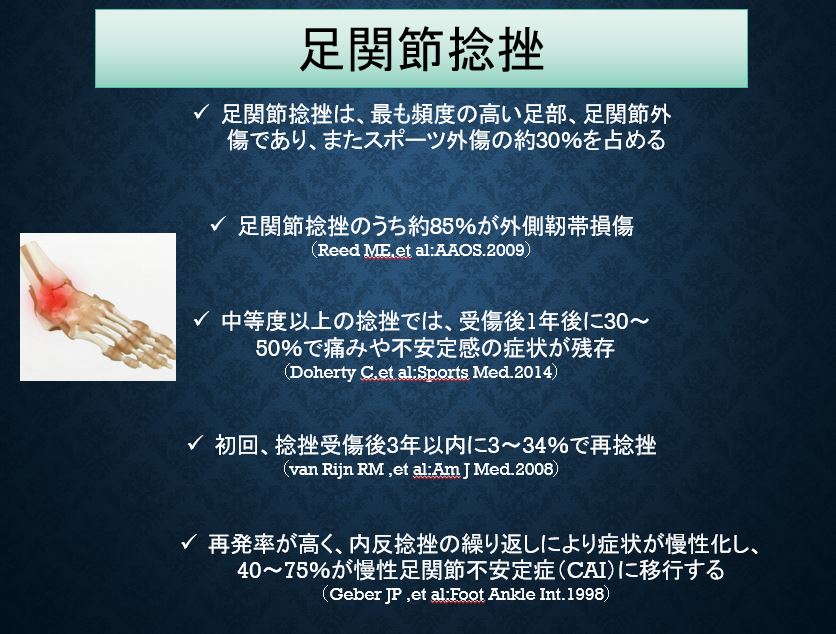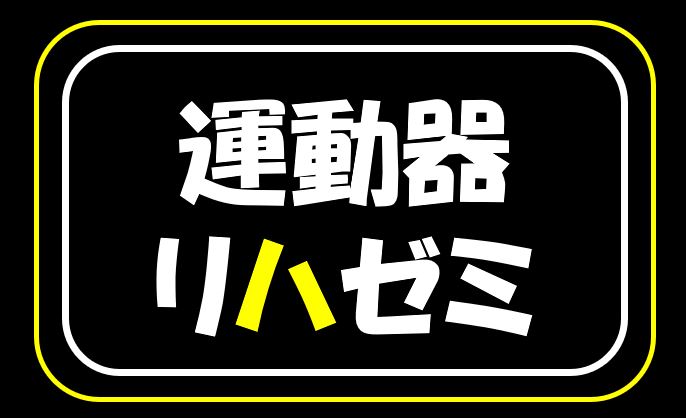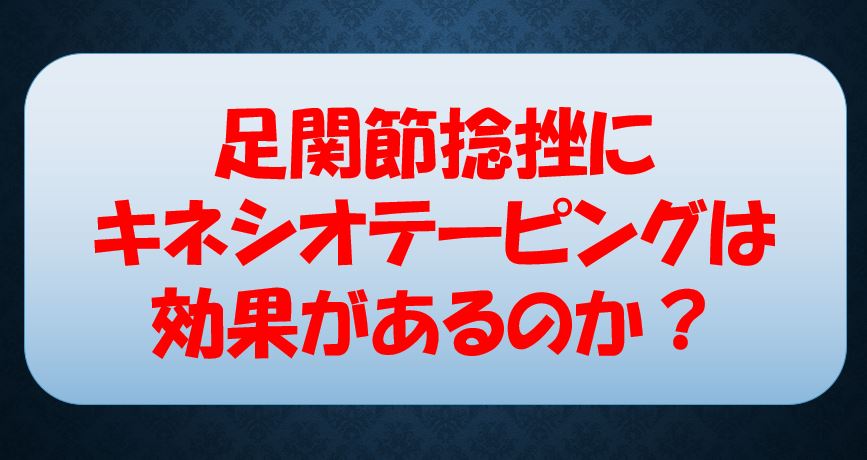こんにちは!
運動器専門のリハビリスタッフです!!
いつもお世話になります。
今回は、『足関節捻挫にキネシオテーピングは効果があるのか?』について解説させていただきます。
足関節捻挫は、最も頻度の高い足部、足関節外傷であり、またスポーツ外傷の約30%を占めると報告されています。
足関節捻挫のうち約85%が足外側靭帯損傷で(Reed ME,et al:AAOS.2009)、中等度以上の捻挫では、受傷後1年後に30~50%で痛みや不安定感の症状が残存する(Doherty C,et al:Sports Med.2014)とされています。
その他の報告では、初回、捻挫受傷後3年以内に3~34%で再捻挫する(van Rijn RM ,et al:Am J Med.2008)とされています。
また、足関節捻挫は再発率が高く、内反捻挫の繰り返しにより症状が慢性化し、40~75%が慢性足関節不安定症(CAI)に移行すると報告されています。(Geber JP ,et al:Foot Ankle Int.1998)

そんな中、2020年に、急性外側足関節捻挫患者におけるキネシオテープの効果を検証している論文が海外で報告されています。
足関節捻挫に対するキネシオテーピングは様々な医療施設で行われていることもあり結果が気になるところです。
◆論文紹介
Randomized Controlled Trial
Trials (IF: 1.88; Q1)
. 2020 Feb 12;21(1):176.
doi: 10.1186/s13063-020-4111-z.
Add-on effect of kinesiotape in patients with acute lateral ankle sprain: a randomized controlled trial
急性外側足関節捻挫患者におけるキネシオテープの付加効果:無作為化比較試験
Jeong-Cheol Shin 1, Jae-Hong Kim 2 3, Dongwoo Nam 4, Gwang-Cheon Park 5, Jeong-Soon Lee 6
Affiliations expand
- PMID: 32051009 PMCID: PMC7017523 DOI: 10.1186/s13063-020-4111-z
Abstract
Background: Evidence for the add-on effect of kinesiotape (KT) with acupuncture for treating ankle sprains remains insufficient. We assessed the add-on effect of KT on ankle sprains by comparing acupuncture combined with KT (AcuKT) with acupuncture alone in patients with acute lateral ankle sprain (ALAS).
背景 足関節捻挫に対するキネシオテープ(KT)と鍼灸の併用効果については、まだ十分なエビデンスがない。我々は、急性外側足関節捻挫(ALAS)患者を対象に、鍼灸とKTの併用(AcuKT)と鍼灸単独を比較し、足関節捻挫に対するKTの追加効果を評価した。
Methods: This study was a multicenter, randomized controlled clinical trial that included a per-protocol analysis of the add-on effect of KT on ALAS. The randomization was software based and only the assessors were blinded. Sixty participants (20 each from three centers) with grade I or II ALAS were randomly assigned to acupuncture (n = 30) or AcuKT (n = 30) groups. Both groups received acupuncture treatment once daily, 5 days per week for 1 week. The AcuKT group received additional KT treatment. Visual analog scale (VAS) scores for pain and the Foot and Ankle Outcome Score (FAOS) were obtained, and edema measurements were performed at baseline (week 0), at the end of the intervention (week 1), and at 4 weeks after intervention (week 5). The European Quality of Life Five Dimension-Five Level Scale (EQ-5D-5 L) measurements were conducted at week 0, week 1, week 5, and week 26 after the intervention. The number of recurrent ankle sprains was determined at 4, 8, 12 and 26 weeks after the intervention.
方法は以下の通り。本研究は、多施設共同無作為化対照臨床試験であり、急性外側足関節捻挫(ALAS)に対するキネシオテープ(KT)の付加効果のパープロトコール分析を行った。無作為化はソフトウェアに基づいて行われ、評価者のみが盲検化された。グレードIまたはIIの急性外側足関節捻挫(ALAS)を持つ60人の参加者(3つのセンターから各20人)を、鍼治療群(n = 30)またはAcuKT(鍼灸とキネシオテープ)群(n = 30)に無作為に割り付けた。両群とも、1日1回、週5日、1週間の鍼灸治療を受けた。AcuKT(鍼灸とキネシオテープ)群では、さらにKT治療を行った。ベースライン時(0週目)、介入終了時(1週目)、介入後4週目(5週目)に、痛みのVAS(Visual analog scale)スコアとFAOS(Foot and Ankle Outcome Score)を取得し、浮腫みの測定を行った。European Quality of Life Five Dimension-Five Level Scale(EQ-5D-5 L)の測定は、介入後0週目、1週目、5週目、26週目に実施した。足関節捻挫の再発回数は、介入後4週目、8週目、12週目、26週目に測定した。
Results: Fifty-six patients with ALAS completed the trial (AcuKT group, n = 27; acupuncture group, n = 29). There were significant changes in visual analog scale score (AcuKT, P < 0.001; acupuncture, P < 0.001), the FAOS (AcuKT, P < 0.001; acupuncture, P < 0.001), and EQ-5D-5 L measurements (AcuKT, P < 0.001; acupuncture, P < 0.001) within both groups. There were no significant differences between groups in terms of any outcome or in a subanalysis based on symptom severity.
結果 56名の急性外側足関節捻挫(ALAS)患者が試験を完了した(AcuKT群(鍼灸とキネシオテープ)、n = 27、鍼灸群、n = 29)。両群において、visual analog scale score(AcuKT(鍼灸とキネシオテープ), P < 0.001; acupuncture, P < 0.001)、FAOS(AcuKT, P < 0.001; acupuncture, P < 0.001)、EQ-5D-5 L測定値(AcuKT, P < 0.001; acupuncture, P < 0.001)に有意な変化が見られた。いずれの結果においても、また、症状の重さに基づくサブ解析においても、両群間に有意な差はなかった。
◆論文の結論
Conclusions: These results indicate that AcuKT did not show a positive add-on effect of KT with acupuncture in terms of pain reduction, edema, recovery of function, activities of daily living, quality of life or relapse of ALAS.
結論 以上の結果から、AcuKT(鍼灸とキネシオテープ)は、痛みの軽減、浮腫、機能回復、日常生活動作、QOL、急性外側足関節捻挫(ALAS)の再発の点で、鍼灸によるKT(キネシオテープ)のプラスの付加効果を示さなかった。
◆まとめ
上記の論文では、急性外側足関節捻挫60名に対してキネシオテープ(KT)と鍼灸の併用効果について、検証されています。
60名の対象を鍼灸群30名と鍼灸+キネシオテープ群30名の2群に分けて調査をしています。
介入前、介入1週後、介入4週後に痛み(VAS)、足機能(FAOS)、浮腫にて評価していま
す。
結果としては、両群ともに改善を認めたが、2群の比較においては差がなかったと報告されています。
よって、足関節捻挫にキネシオテーピングを追加しても、効果が得られない可能性が高いということになります。
今回の報告はキネシオテーピングの効果であり、足関節捻挫においては足関節を固定し、組織の保護要素としてテーピング治療もありますので、テーピングの違いについては理解しておく必要があります。
今回は、『足関節捻挫にキネシオテーピングは効果があるのか?』について解説させていただきました。



